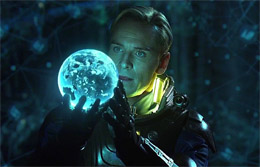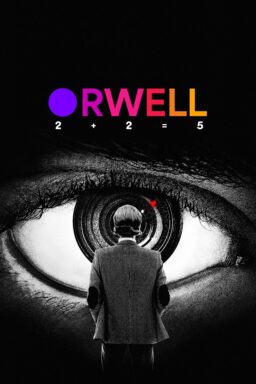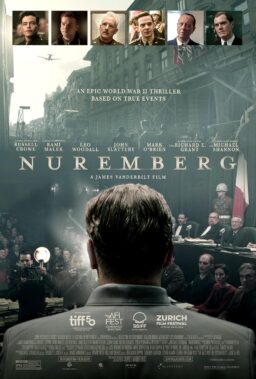
A few years ago, while sitting in the mosque during a Friday sermon, I noticed a man in the center of the second row. This is an octagonal mosque with bare white walls. On the outside, its bluish brick and yellow dome consciously invoke the Dome of the Rock, which itself, incidentally is not a mosque. This man was sitting on the blue carpet with the rest of us, about six feet away from the preaching Imam, yet interestingly, he was not looking at him. The Imam was dressed in a white thobe, white skull cap, and that contrasted his thick jet-black beard. Instead, the man of salt-and-pepper beard was staring at the giant projection of this Imam on a screen above. I don’t remember what the Imam was speaking about that day, which might explain why I was probably staring curiously at this man as he stared at the live video projection of the preacher standing right in front of him. But, for reasons I will explain below, that moment comes to mind when I think of Ridley Scott‘s “Prometheus” (2012).
This film is a dark, rocky, barren grey piece of science fiction about archeologists who discover commonalties among various earthly relics, leading them to conclude that the origins of humanity might exist on a planet two years and a trillion dollars away. In that moment, they unleash one of the first main themes of this film, that as we dig deeper and deeper into our own hidden caverns, we discover closer connections with those furthest and farthest away from us. This point is also a central theme in the theory of evolution, that as we dig into our deepest history, we find that we are all connected. This point gets repeated in multiple ways, including small threads related to a character’s mastery of human languages, permitting him to reach the core common elements in those languages. These developments subsequently enable him to immediately decipher hieroglyphics in the new planet.
In a giant spaceship named after the Greek Prometheus, they explore this empty planet, soon discovering straight lines, reminiscent of the Nazca markings of Peru, pointing toward what looks like a giant version of the circular pyramid in Guachimontones in Mexico. Exploring the barren innards of the pyramid, they discover multiple life forms, and soon discover how they all – the life forms and they themselves – relate to each other. As we can expect from the increasingly pounding soundtrack this is not good news. We remember from the Greek myths that Prometheus’ punishment for helping humanity was Pandora, who opened her box, to let loose all sorts of evils. And this point reveals a second major theme, that it might be well and good to explore our own caves, but when we explore someone else’s caves without a proper invitation, permission, plan, or method, then we are likely to unleash the ravages of buried horrors and plagues. Whether we call it rape, or occupation, or imperialism, the silence of the planet is not an indication of consent.



The strength of this movie is that with its barren atmosphere and its small plot (that seems to alternate between cliché and innovation), it manages to explore some very big ideas. The plot is so small that almost everything takes place in a few bright, yet claustrophobic rooms and hallways in a giant spaceship, along with a few huge yet frighteningly dark rooms and hallways in the circular pyramid. Most of the rest of the film takes place in the runway stretching the distance between the two. The problem with a film that seems so colossal, yet surrenders its small plot to big ideas is that it will dissatisfy most moviegoers, who will get further alienated by the many predictable moments. In contrast, the strength of Ridley Scott’s “Blade Runner” (more than “Alien”) was that it managed to explore profound ideas without skimping on story. That is not the case with “Prometheus,” unless “Prometheus” is taking the route of the “Harry Potter and the Deathly Hallows” and even “Twilight: Breaking Dawn” by telling one full story in two separate, but incomplete movies. But, if “Prometheus” is made to stand alone on its own, or as the prequel to a very famous movie series that is not alien to us, I can say that I was still immersed, satisfied, and kept thinking about the movie for days after seeing it.
In any case, through the course of the movie, as the shiny spaceship and stoic pyramid stand facing each other, waiting for each other to pull a trigger, we experience one of this film’s many duels. This is a consistent theme in Ridley Scott’s films, the clash between two worlds, including American Cops in Japan in “Black Rain,” Christopher Columbus arriving in the New World in “1492: The Conquest of Paradise,” a Jewish Cop chasing an African American mobster working against an Italian syndicate in “American Gangster,” as well as Muslims and Christians battling for Jerusalem and more in “Kingdom of Heaven.” Repeatedly, Scott presents two worlds that are culturally different colliding, while in some cases, they make peace.
Taken further, this merger between different mythologies and methods provides something interesting in “Prometheus.” For starters, we have the two monuments, one of the distant future and one of the distant past: a spaceship and a pyramid. The spaceship’s name recalls the ancient Greeks, and the pyramid recalls the Ancient Mexicans. These were two distinct, thriving ancient cultures that have long since been overtaken by Abrahamic religion, imperialism, and technological developments.


Further, we have that necessary conversation in science fiction, between religion and science. But the conversation is not simply one of the conflict or conciliation between the two; frankly, that is a boring conversation for me. Central to the film is the quest to discover the origins of life; this quest very intriguingly shifts to a quest to discover the motivations behind the origins of life. But, the emphasis in the film seems to be a point I find much more interesting: that each of us is working in our capacities and abilities to understand life and reality.
Religion presents itself here more through iconography than through actual practices of faith. We have the pyramid and lines, and we discover at the end of the film that the pyramid and lines may be more functional than ritual. We also have a woman’s crucifix, whose meaning seems to connect her more to her memories of her biological father than it does connect to her faith in her Holy Father. We also have this largely non-religious group erecting a small Christmas tree. It seems out of place in the spaceship and in the plot, except that it is another religious symbol whose history gets merged into the tradition it eventually represents.
Likewise, science in this film is not merely the allegedly all-powerful, capitalized Science. Rather, it gets illustrated implicitly by the technology from the distant past and distant future. Explicitly, science makes its appearance through very specific methods of inquiry, through archaeologists, geologists, and apparent engineers. As is the case with many “team” movies (most often found in heist films), our cast is a team of different people with different temperaments, but they have been organized together because of their different skill sets. When the trained scientists try to venture outside their own skills, they put themselves and their team at risk. When the geologists ignore the rock formations and try to explore life, they try to analyze living things the way they analyze rocks, and get hurt. When a woman tries to get surgery from a medical machine designed for men, she too runs into serious problems. And, strangely, throughout the film, these scientists seem so quickly willing and trusting to take off their helmets to breathe in the foreign air. That this is a barren planet that has clouds and snow caps, and poisonous air would be enough to frighten me.

Further, intuition also has its place. The ship’s captain seems to very quickly understand every person he meets, right down to their immediate motivations. The scientist with the crucifix seems to intuit between faith and doubt at the appropriate times. And, in the climax, the captain makes intuitive choices that seem to subsequently save the human race.
But, this conversation has further dimension. Overriding religion and science is business. A private investor sponsors the entire affair, and has his own motives. We discover, though, that his motives are, in their essence, identical to the quests of the religious believer and the scientist of any inquiry. His quest is the quest of this film: to reach beyond the mechanical limits of this worldly life. Meaning, the quest is to find that there is meaning in the ongoing cause-and-effect process that drives reality. The geologist fulfills that quest through the study of stones; in the stone the geologist sees a whole story. The archaeologist finds the stones to be relics, again seeing in the forgotten piece a whole narrative of a world. The believer finds the relics to be indicators or evidences of something greater: at the very least, purpose, and for the ambitious believer, Divinity. And, in that quest for narratives in stones, and in that stretching of arms toward Divinity, the common search is to exceed the boundaries of this world. This ongoing quest to understand reality carries with it an ongoing quest to surpass it. Meaning, the ongoing quest is for immortality. Another concept in the film is war, and the weapons that go with war. Even in war, the quest may be for immortality, by violently stopping those seeking to block it.

And it is in this point about immortality that this film really had me thinking. “Prometheus” is so full of icons. Most of those symbols get defined with alternate meanings, like the woman’s crucifix. Some of those symbols are not ever explained, like the giant face in the room of tubes. Some of these icons even seem to change form, like the murals in the ceiling of that room.
More than that, “Prometheus” has us wrestling with reality. One character is a robot, and we keep staring at him to detect the appearance either of humanity or of forgery. Another character is his boss, and we wonder even after answers are given, if she is herself human or machine. And, if she is thoroughly human, we wonder if she has any humanity left in her. This point is, on a side note, another recurring theme in Scott’s films, especially “Alien” and “Blade Runner,” while his non-science fiction films repeatedly have characters that have us wondering if they are one of “us” or “them.”
But, even more than all that, the true key to immortality in this film comes not from science, religion, or business, but from stone relics, and more than that, from film and video. The first scene of “Prometheus” features a silent, hairless muscular white guy standing next to a speeding waterfall in lush green terrain. In the sky, a spaceship disk dangles between clouds; is it leaving or arriving, we do not know. He is not the white of a Caucasian; rather, he is the white of wax or the white of the polished limestone of the old Greek and Roman statues. After eating some gems in pomegranate coating, his waxy form starts to crack, and he falls into the water. Perhaps that process launches the process of evolution, leading to an eventual recreation of humans.
Soon, we meet a roaming man in a fitted grey suit, trotting through the familiar interior of a space ship, watching “Lawrence of Arabia.” His model is Peter O'Toole in bright blue eyes and combed blonde hair. And, I’m thinking to myself that if he has seen “Lawrence,” then surely he has also seen “2001: A Space Odyssey” and “Alien.” Thus, just as much as he is a product of “Lawrence of Arabia,” so too is the ship a product of “Alien.” And, for those who have seen the movie, down to the final scene, consider the loop that this forms.
Further, he watches people dream, as though their dreams are projections on a television screen. And, the dreams he sees seem to be recurring memories. And, as we travel through the spaceship, we arrive at the boss’ wing, realizing that she does not have windows or wallpaper. Rather, she has giant wall-to-wall screens projecting various landscapes from across the earth. And, as we explore the dark caverns of the pyramid, we get exposed at multiple times to blinking bits of video footage that seem to clue us into some sort of story, specifically of two rooms. One is a temple that might actually be a storehouse. The other is a map room that reveals something very different.
And in this process of movie iconography, I am reminded of the cultural impact of film and television. Aside from the fact that film celebrities are our modern day heroes (and in some cultures, they literally are gods), I’m speaking of subtle influences. We remember that our cultural tradition of wearing blue jeans, for nearly every occasion, and has now become a global symbol of either Western cultural hegemony or cultural enlightenment. And, we remember that this tradition goes back to Marlon Brando. Or, we remember that our practice of driving Hummers is today a symbol of American excess, but traces itself to Arnold Schwarzenegger buying a Humvee from the US military. The point here is that not only do we “survive” through movies, videos, in the way that past generations survived through sculptures, but the images on screen become for us not an alternate reality, but a living almost-breathing reality.
So, when we remember our adventures with, for example, E.T., with Travis Bickle, and even with the Alien, they become greater parts of our memories and consciousness than the hundreds of anonymous patrons in the movie theaters with us when we watched those films. I can probably remember every first screening I have had of every Ridley Scott film, better than I can remember most of my birthdays. That does not seem like a good thing.
So, in watching this film, it really hit me that a few filmmakers have now come full circle. In “War Horse,” Steven Spielberg reaches back to the idealized films of his childhood of Hawks and Ford, and this film comes just a few years after he returned to his own “Indiana Jones” roots. In “Hugo” Martin Scorsese to reach back to his influences in Georges Méliès, just shortly after returning to his gangster film roots in the television series, “Boardwalk Empire”. On a side note, (relative) newcomer J. J. Abrams reaches back to the early films of Spielberg in “Super 8.” His ongoing reboot of “Star Trek” has so many of us reminiscing about past virtual-friends from television and film.
Now, in “Prometheus,” Ridley Scott returns to the “Alien” beginnings of his own career. Common among all of these filmmakers is that they had firsthand experience in forming our realities, both with the stories they told us, as well as with the giant images they place before us. So, when that man in the symbolic mosque stares at the image of the Imam, rather than the real Imam, perhaps he thinks he is staring at something more real than the real man. I don’t know if that is a good thing, but I suppose that is reality.











